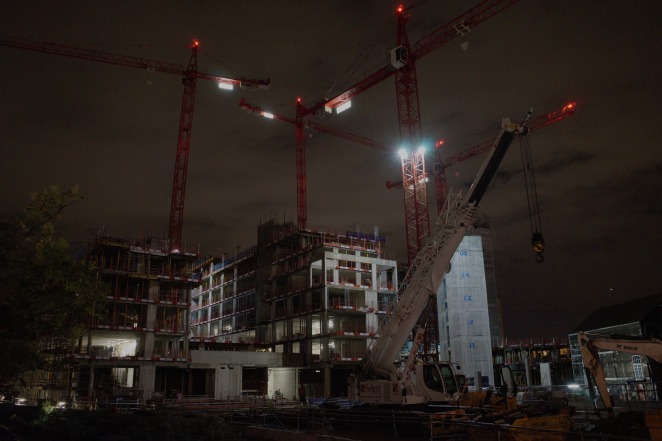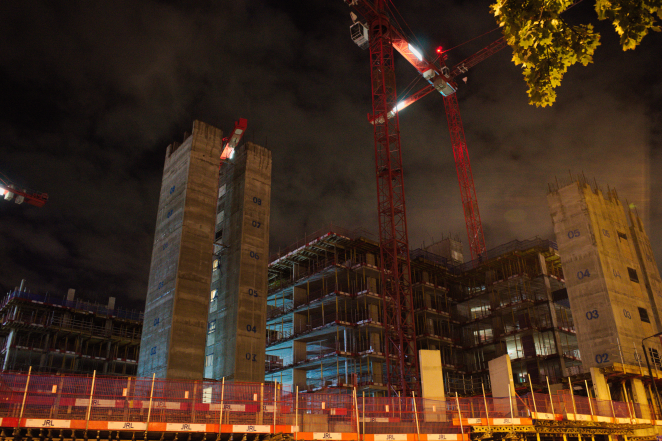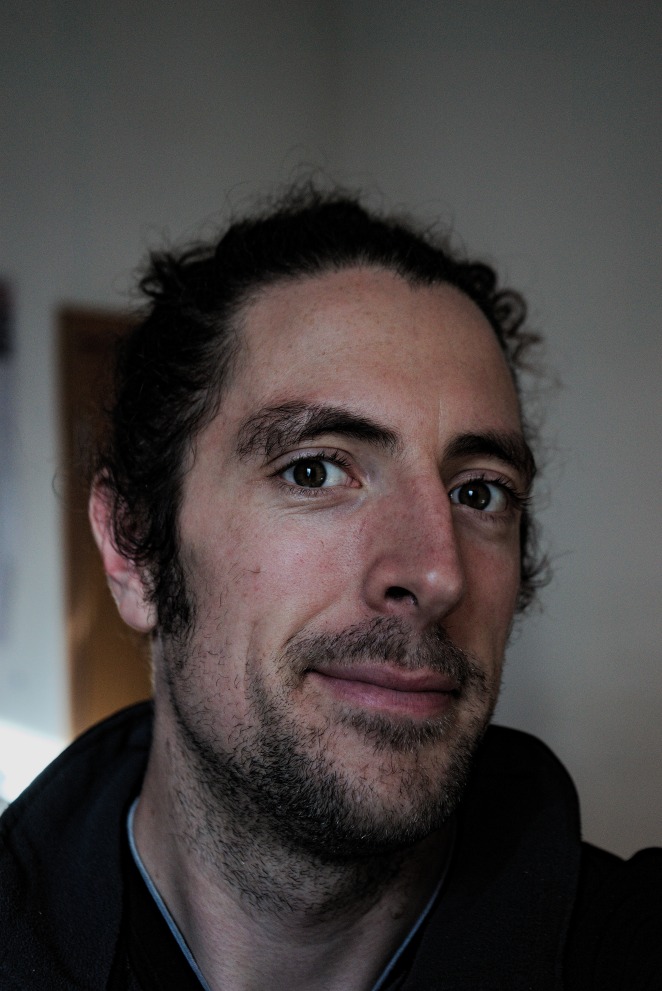As part of fieldwork for my PhD project on the weekend before last, I collected a large amount of data, including images taken with a relatively new camera (released in May 2015), the Pentax K3ii. It features an APS-C sensor (1.6x crop factor) and 24 megapixels on the sensor, but one intriguing quality that lead us to experimenting was it was the so called ‘pixel-shift (PS) resolution’ mode touted by it’s makers as increasing the effective resolution of the images it gathers (there are some sample images in the gallery here, showing PS mode). It does this by taking 4 images, each shifted by one pixel in each direction. Due to the effect of the Colour-filter array present over almost all consumer cameras, this makes up the colour data being filtered out by effectively stacking colour information on every pixel.
While the dataset I gathered will take quite a while to process in full, I thought for this blog post I’d take a look at an image taken from the same position with pixel shift both on and off. For the work with the K3ii I used a 35mm Pentax f/2.4 lens rented from SRS microsystems.
Firstly, a specific PS development software, Silkypix, was required in order to develop the PS images. For the purpose of this blog post I have left the default DNG -> Tif parameters on, in order to try and get a like-for-like comparison of a scene with and without PS mode on. It should be noted that the RAW file size for the PS mode images is about 4 times the size as those without it on, as would be expected considering it’s taking 4 images. The jpgs, however, are the same size, so we’ll also look at whether there are noticeable differences after jpg compression.

PS mode off
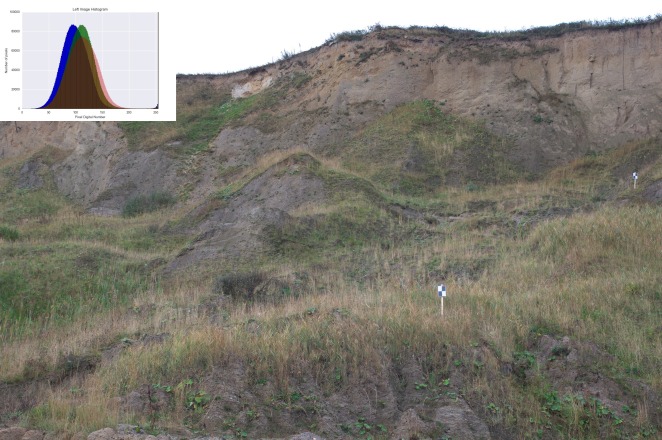
PS mode on
Let’s look at a couple of interesting areas of this image, first the photogrammetric target towards the front. Note: The images are not perfectly aligned so here I’ve taken the same cropped region from the image.

PS mode off

PS mode on
The image on the left is well formed, and localization of the centre of the target will undoubtedly be quite simple in the context of automatic detection. On the right, with PS mode on, we see a somewhat different story, with an apparent graininess surrounding the upper edges of the target. The centre of the target will be difficult to localize correctly. When initially looking at this, I thought it was likely localized to the target itself, considering no new data is really being added by the PS itself. This suggests that for targets at least, PS will perform the same or worse than with it turned off. There appears to be some focusing issues with the image on the right also.
Let’s look at a different region, at the top of the cliff where some color variation would be expected.
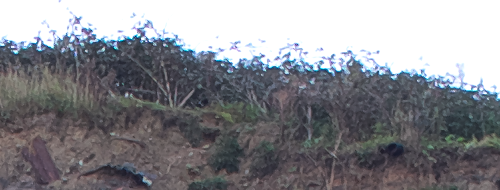
PS mode off
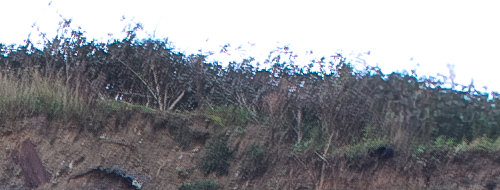
PS mode on
Pixel shift potentially recovers more of the finer details, but is giving up a lot in the process, as the image appears myopic and out of focus, as well as retaining the graininess seen earlier. The blurriness could be explained by my own error in acquiring the image, as we I was shooting from a tripod without a remote trigger, though the apparent graininess is present throughout many of the collected images, and somewhat resembles a sharpening filter applied on images, leaving a slightly uncomfortable amount of high frequency information within the images.
I decided to try one more image, ensuring the PS version was at the very least of a perceptibly passable quality and run the same tests again:
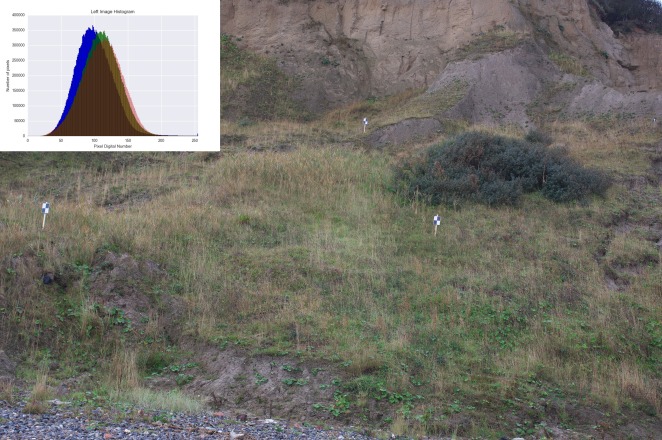
PS mode on
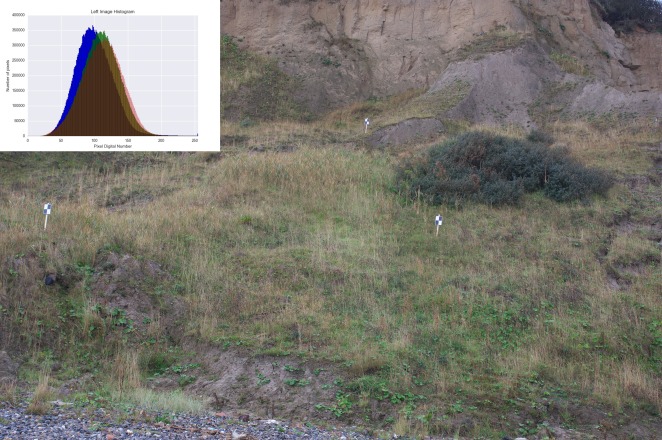
PS mode off
Targets:

PS mode off

PS mode on
Bank above bush:
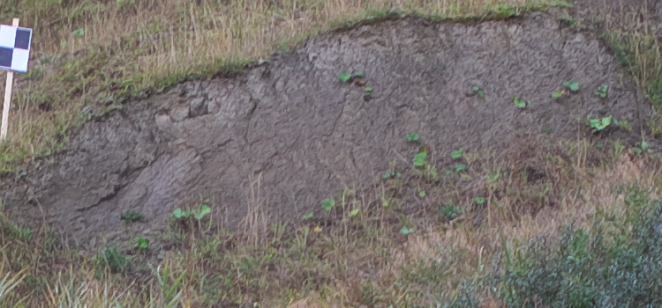
PS mode off
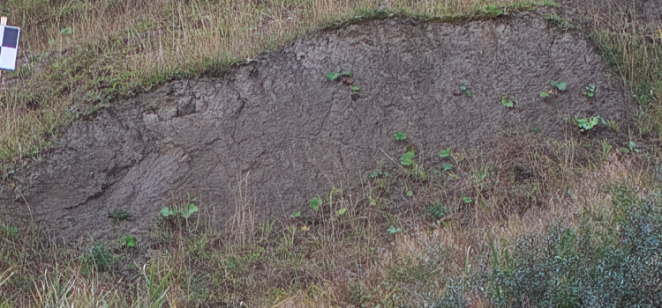
PS mode on
Thankfully for the second image set things have appeared to work exceptionally well. While the graininess seen on the first target is still somewhat perceptible in the second, the difference is not as apparent. The bank is undoubtedly of a much higher apparent spatial resolution in this image with PS mode on, which is what we would expect. The comparison between images points to the fact that any errors due to blur or lens effects will be amplified by switching pixel-shift resolution mode on, as would be expected. However, the high quality PS images appear to indeed be of higher perceptible resolution. It remains to be seen whether these are differences within the individual images selected, or a result of the PS, or both, but I hope this will become apparent as I sink my teeth in to the data.
Watch this space for more updates as my work progresses!
